I’m not sure why I had this idea that a internship in HCI would require only left brain tasks, but before the program I was prepared to put art aside for the time being and work on learning the logical stuff. This is the stuff I’m not so great at, coding, math, all the difficult concepts I have to work 3 times as hard at to understand. I knew- abstractly- that learning these subjects would ultimately fold into my skillset and be useful, eventually, for my medical art career, but I had this notion that it would be years of hard studying before any of this “computer stuff” (I hate how non-specific this term is, but non-specificity is how I viewed it before coming here) would eventually tie into what I want to be. This is not the case. Already I’m seeing art and medical illustration related applications to practically everything we’re doing. The concept of HCI is so much more closely related to art than I had realized. I had a vaguely similar experience this year in school when I started my sociology class. I will try to explain this well, but it may not make any sense. When I started my sociology class and we started defining sociology and what it relates to, I had a moment of realization of how big and interconnected everything is, and it left this feeling of, for lack of better descriptors, sonder and just general awe of the universe. HCI is the same. We start defining things and I see how interdisciplinary and large the concept really is and I feel as if there isn’t now, and never will be a way to grasp the vastness of it. And art isn’t tangential to HCI: it’s at the very heart of it.
So I’d been thinking, “when I get to this program, I will learn what I can, and one day it’ll make me a better artist and a better hire, but it’s not useful to me yet’. And then I got here and immediately realized I was wrong. It’s useful now. It’s making me a better artist right now.
Day one, we did a tour of VRAC and I got to see virtual and augmented reality up close for the first time and I thought, “yes, this is what I want to do. I can use this to make surgery simulation programs, or videos that students can watch to better understand the complex processes of the human body.” then we talked about 3-D printing and again I thought, “this is what I want to do. I can use this for so many different things. I can go into bioprinting, I can use it in the line of children’s toys I’m designing,” (btw, have I mentioned I’m designing a line of children’s toys? Because I am, and I love talking about it) Even coding, a thing which scares the life out of me, I can immediately see the appeal and uses.
This week we’re working on learning 3-D modeling which was the one thing I immediately recognized from the get-go as “useful” in my eventual career as a medical illustrator. I thought, surely, being an artist, this will be easy for me… I guess I should get used to being wrong because SolidWorks is probably the most complicated computer program I’ve ever used. I mean, it just did not make sense. That being said, it’s getting better, and I was even able to create a little box and lid that snap together. That was cool. But then came Blender. Thank goodness for Blender because I was about to go insane feeling like I’m the only one not understanding what’s going on. Blender clicked almost immediately and I’m having so much fun using it. I’ve created so many little things and absolutely LOVE using it.
Also, I’ve been doing some drawings on top of it all. That’s super fun. I made a little design of everyone in our group. I think it’s pretty cute, but it’s only a rough draft right now. anyway this all to say, I’m glad I applied to this program even though I didn’t even know what HCI was when I did. I’m really learning a lot.
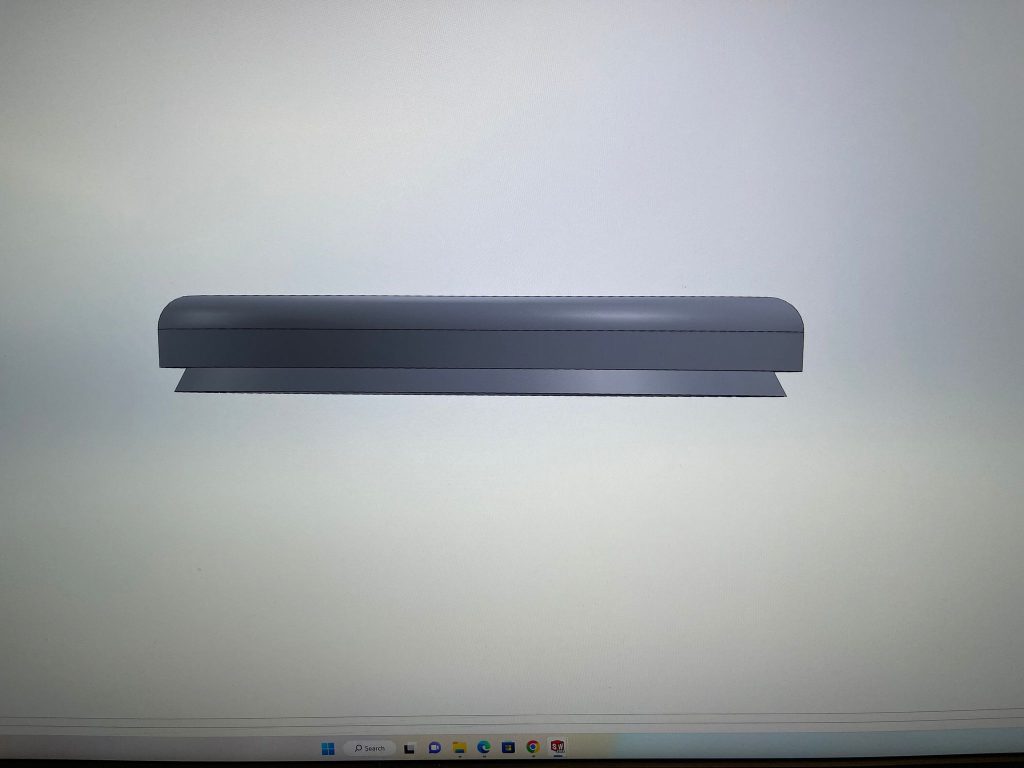
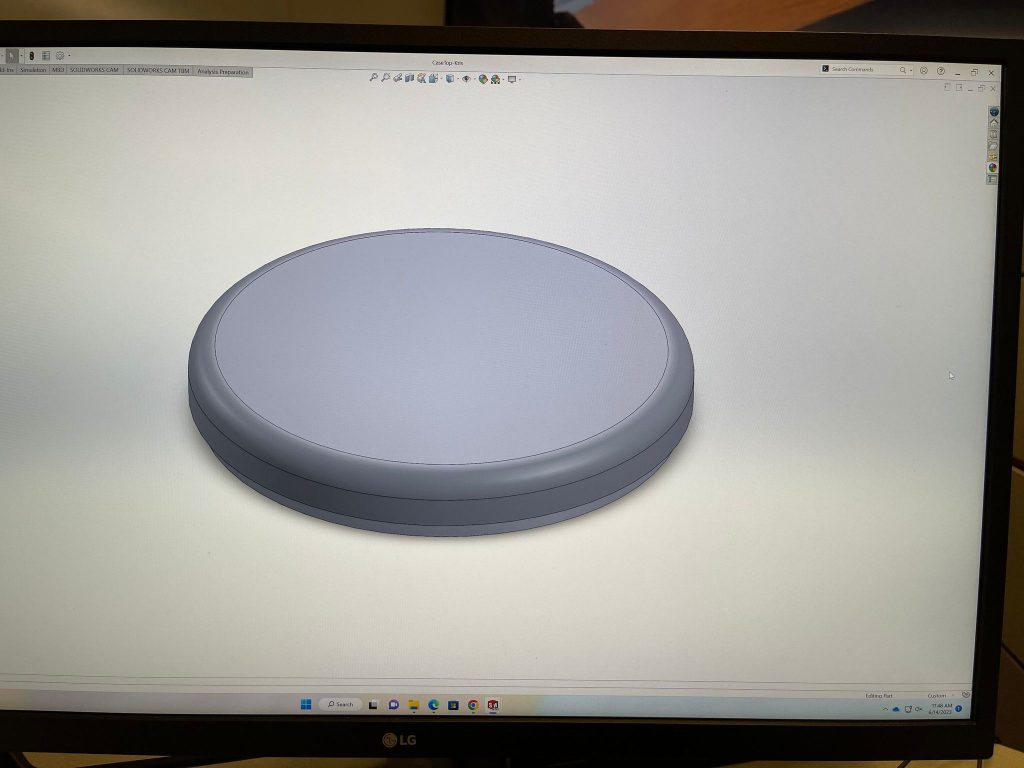
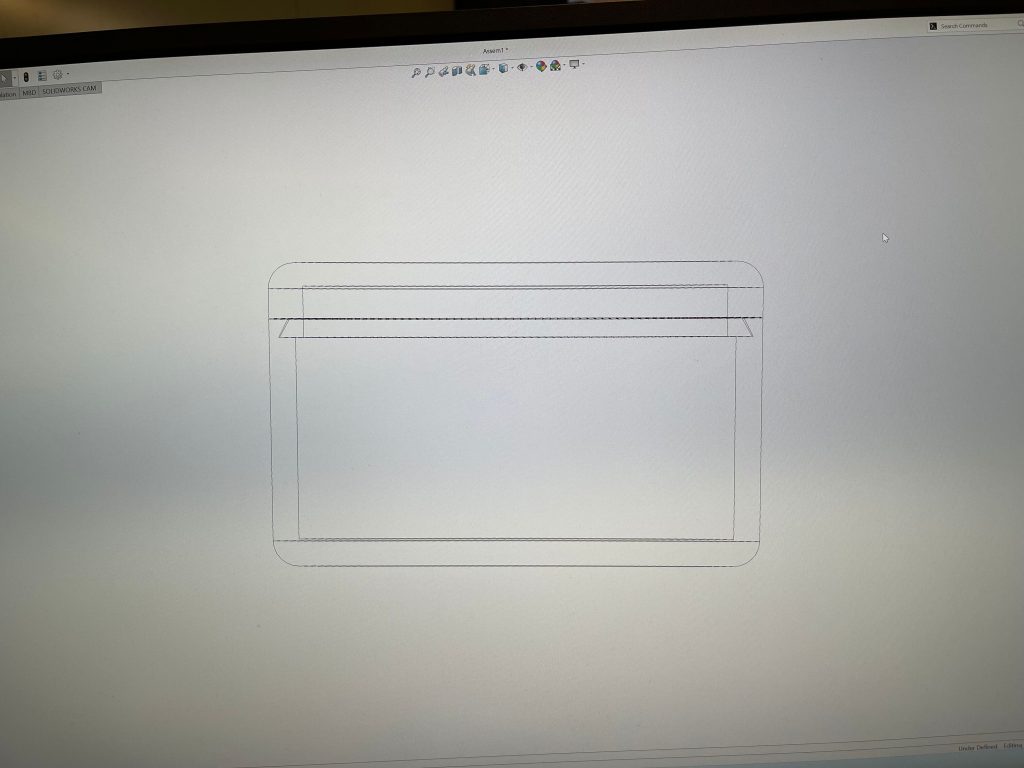
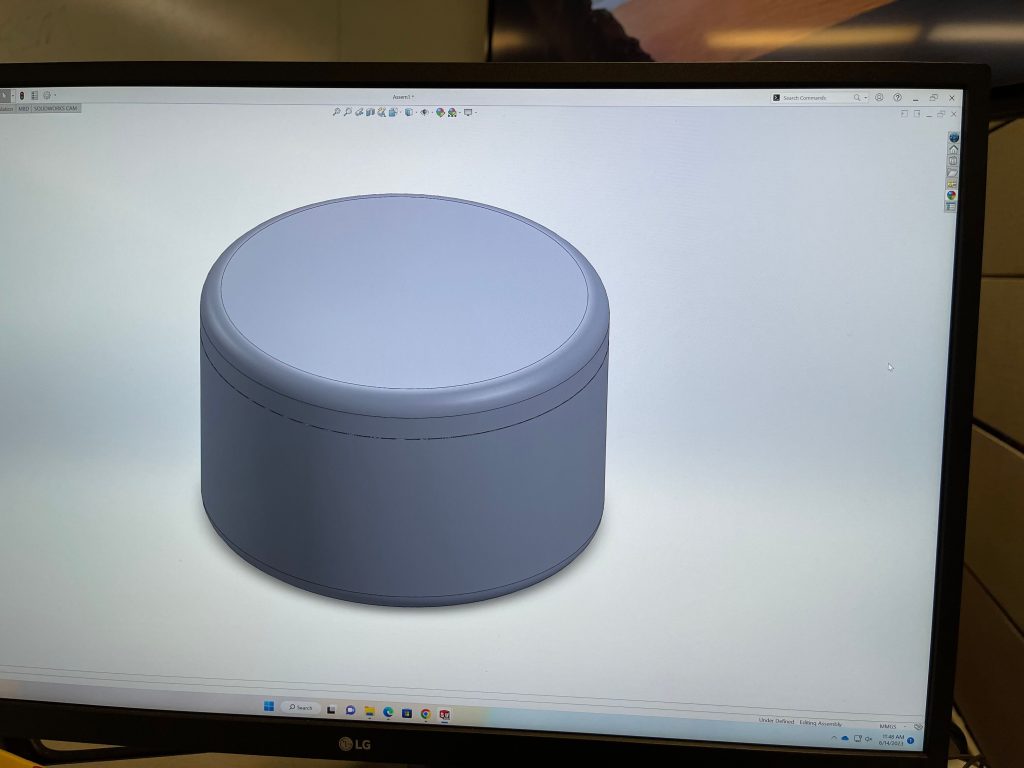
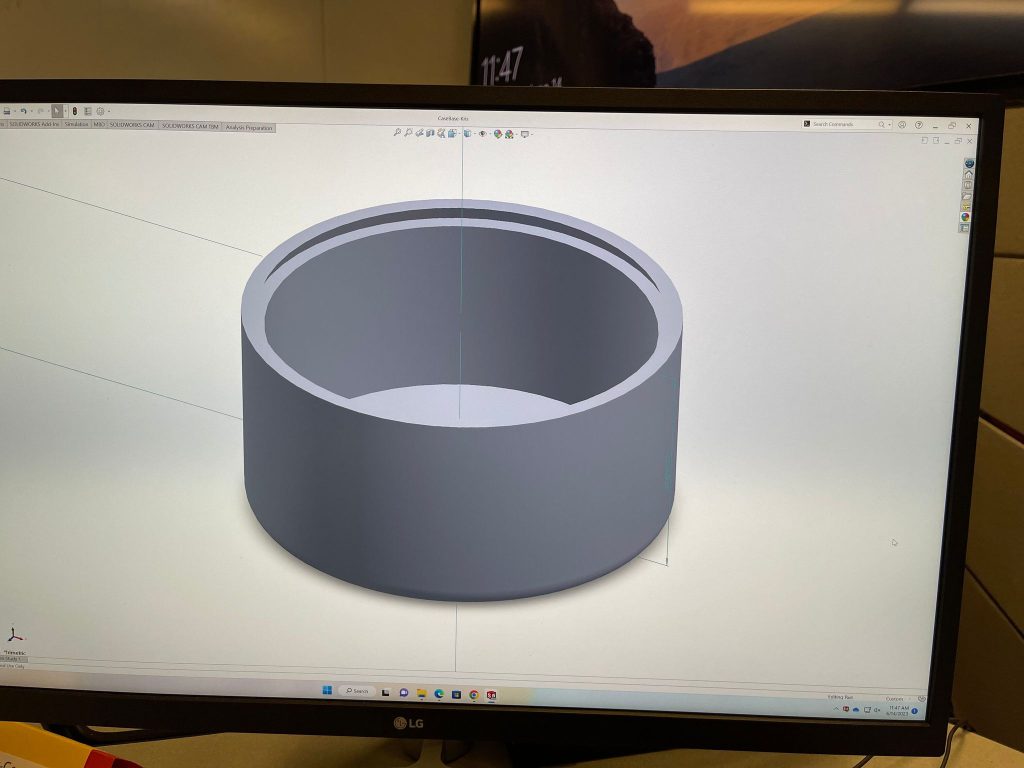
Here are some pictures of the little case that I designed in SolidWorks. It’s a pretty simple design but for someone who literally couldn’t grasp the basics like 4 days ago, I’m proud of it.
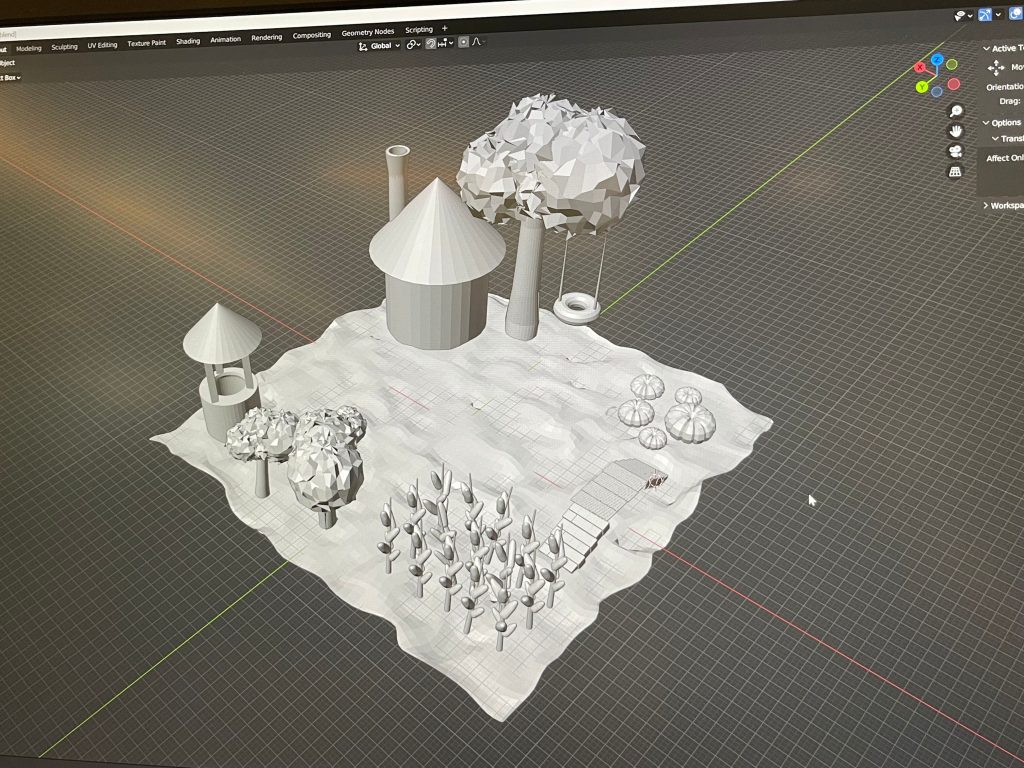
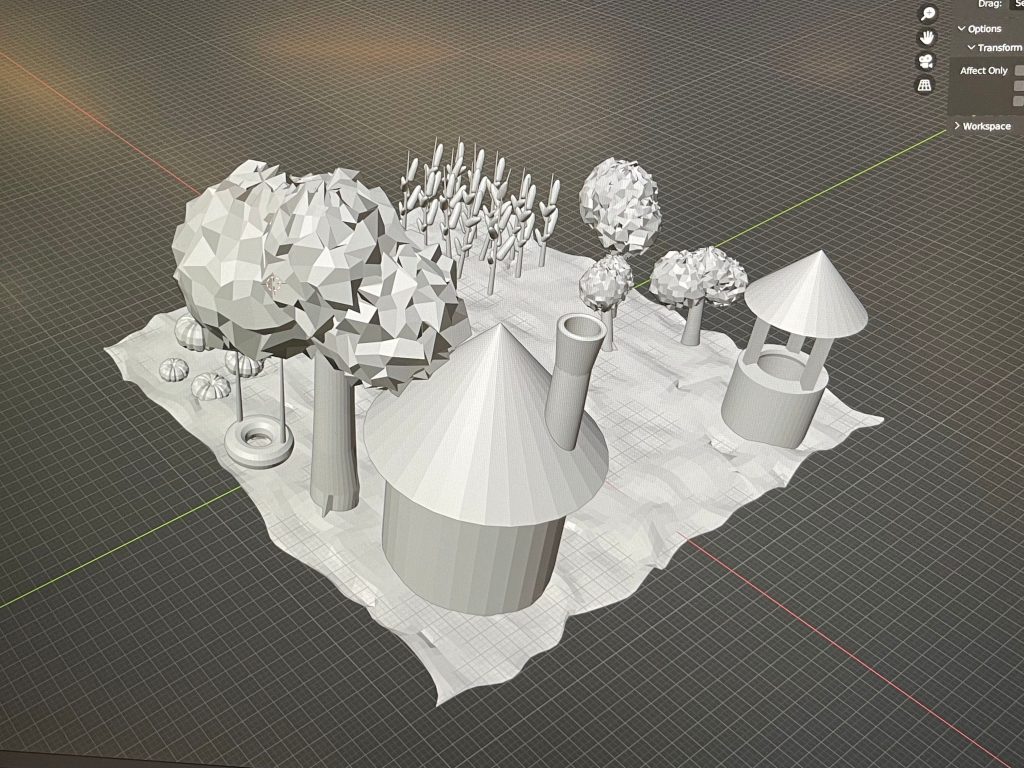
And here’s some pictures of the little “farm” I made in blender. It has a well, a shack, a few trees, a tire swing, a cornfield, a bridge, and a little pumpkin patch. I think it’s cute.

This is the little design I was talking about. The interns have taken to collectively calling our group the “VRAC bunch”. and this is a rough doodle of us as the VRAC bunch in with kind of a brady bunch vibe. Anyway, yeah, I’ve been doing art. LOTS of it. That’s unexpected, but definitely a good thing too.
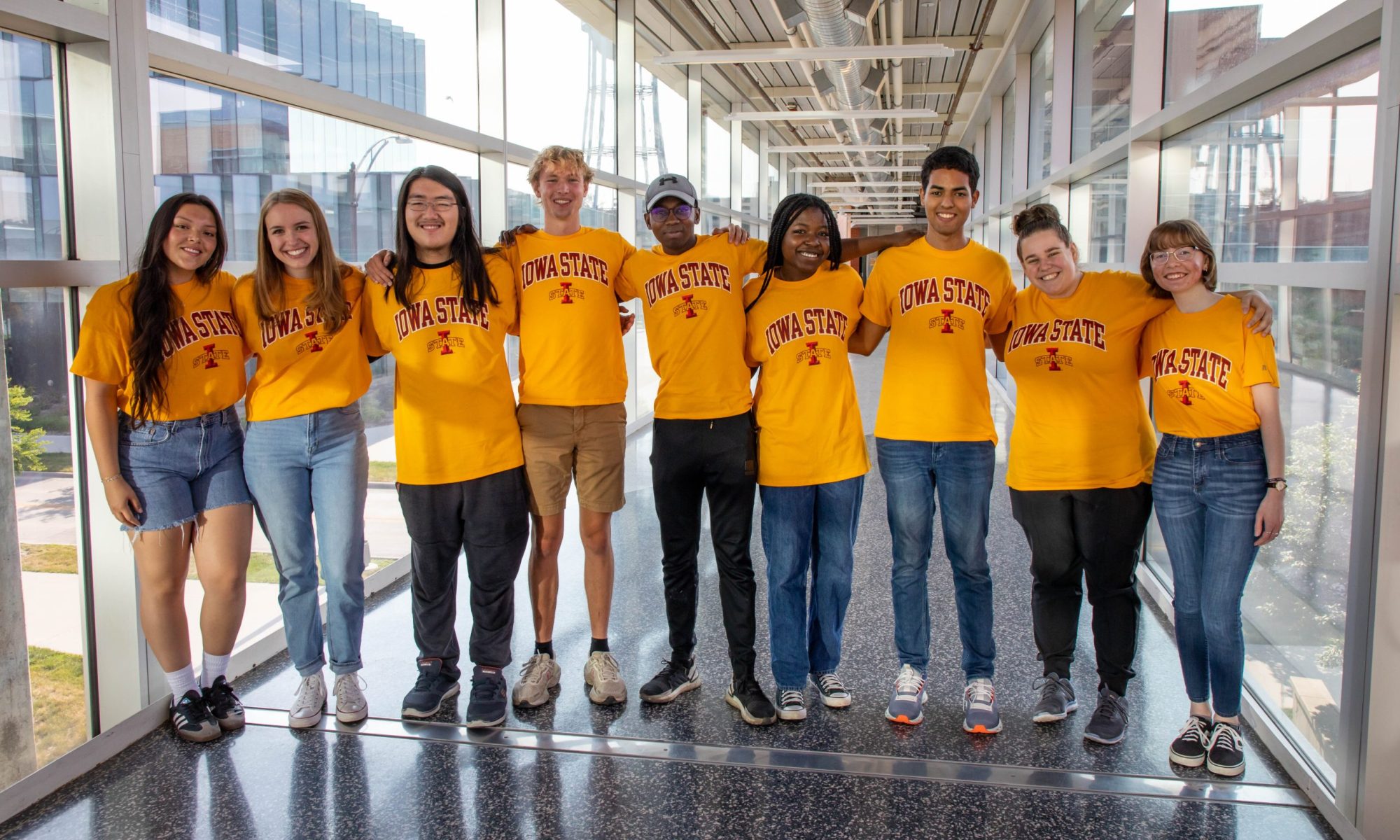
I also started to hear about HCI when I applied to intern. I had little understanding on what it is before I got here, but I agree; it is pretty amazing how interdisciplinary HCI is. By the way, you’re one of the most creative artists I’ve met, and I’m happy you’ve been given the opportunity to learn here at VRAC which I’m sure will greatly propel you towards your medical art career.
Kris, you might enjoy the history-of-tech-in-art talk about a guest speaker we had last spring at our HCI Retreat. Here’s a video link that jumps right to his talk. https://youtu.be/k0ySsRxcjo8?t=2294
Also, we have connections with Mayo Clinic, in particular with Sue Hallbeck (https://www.mayo.edu/research/faculty/hallbeck-susan-ph-d/bio-20035141), but we’ve also spoken with surgeons there who are excited to do XR there like projecting “cut here” lines onto patients to assign surgeons. There’s a lot of potential. Some of the challenges are that patients differ so much. One person’s 3rd left rib might be in a different place than another person’s. Eliot is an expert at medical applications of XR, and even is part of a small company on the side thinking about this.